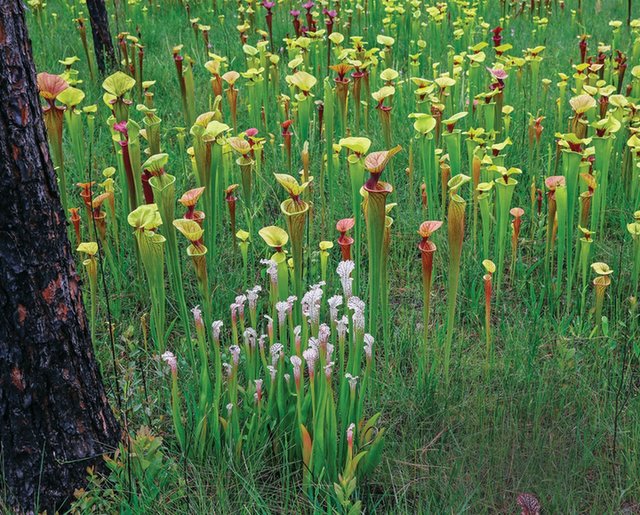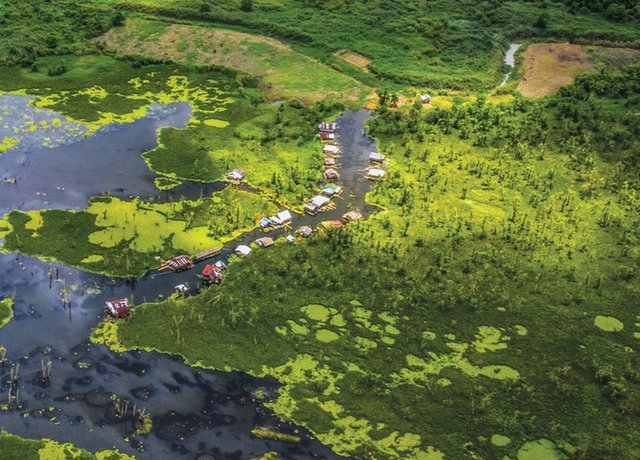
insect-eatingpitcherplantsinanIrish bog
Marshes,mangroves,swamps,deltas,andbogs.Whatdotheseplaceshaveincommon?They’reall wetlands.
Whydoesourplanetdependonwetlands?ThisissueofExplorermagazineisgoingtotellyou.Butfirst,let’slearnsome basics.
Whatisawetland?It’slandthatiscoveredbywaterforatleastpartoftheyear.Wetlandsareneithertotallydrylandnortotallyunderwater.Thewatercanbesaltwater,freshwater,orbrackish—amixtureof both.
WetlandsareoneverycontinentexceptAntarctica.Somearefloodedwoodlands.Others,waterygrasslands.Stillothershavethick,spongymosses.Yet,allaretheirownecosystem.Andtheyarevitalto Earth.
Wetlandsactaswaterfilters.Theypreventfloodsanderosion.Theyprovidehomesforwildlife.Theyabsorbpollutantsbeforetheyreachrivers,lakes,and oceans.

asmallmarshvillageinthe Philippines

amangroveforestin Brazil
Still,wetlandsareunderthreatacrosstheworld.Peopleareconvertingwetlandsintocropland,pasture,andplacesforhousing.Theyaredumpingwasteintothem.Climatechangeisinterfering,too,bringingfloodsand droughts.
Inthisissue,ourNationalGeographicExplorerswilltellyouaboutthepowerofwetlands.We’llalsolookatthechallengeswefacetoprotect them.
BrennaMaloney,managingeditor, Explorer